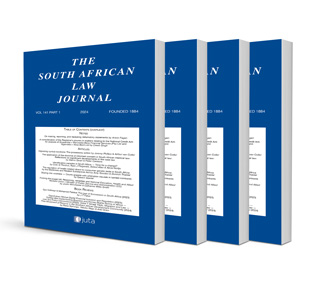
Deriving the Ratio of an Over-Determined Judgment: The Law After Turnbull-Jackson v Hibiscus Coast Municipality
Authors Piet Olivier
ISSN: 1996-2177
Affiliations: Researcher, Max Planck Institute for Comparative and International Private Law
Source: South African Law Journal, Volume 133 Issue 3, 2016, p. 522 – 544
Abstract
The traditional South African statement of the test for whether a judge-made rule is a ratio decidendi is from Pretoria City Council v Levinson. Under this test, a rule can only be a ratio if it is a conditio sine qua non for the outcome of the judgment that endorsed it. But when this test is applied to a judgment that endorses more than one rule, each of which is sufficient for the outcome (what this article calls an ‘overdetermined judgment’), that judgment has no ratio decidendi. In the recent case of Turnbull-Jackson v Hibiscus Coast Municipality, the Constitutional Court held that the Levinson test did not apply to rules in overdetermined judgments and held that it should instead be asked whether the relevant rule is ‘central’ to the judgment. This article argues that the centrality standard amounts to Wright’s ‘necessary element of a sufficient set’ (or ‘NESS’) test, applied to legal reasoning rather than causation. Thus, after Turnbull-Jackson, a judge-made rule is a ratio decidendi if, among other things, it is a necessary element of a set of logical conditions, actually endorsed by the court, that is sufficient to produce the outcome.